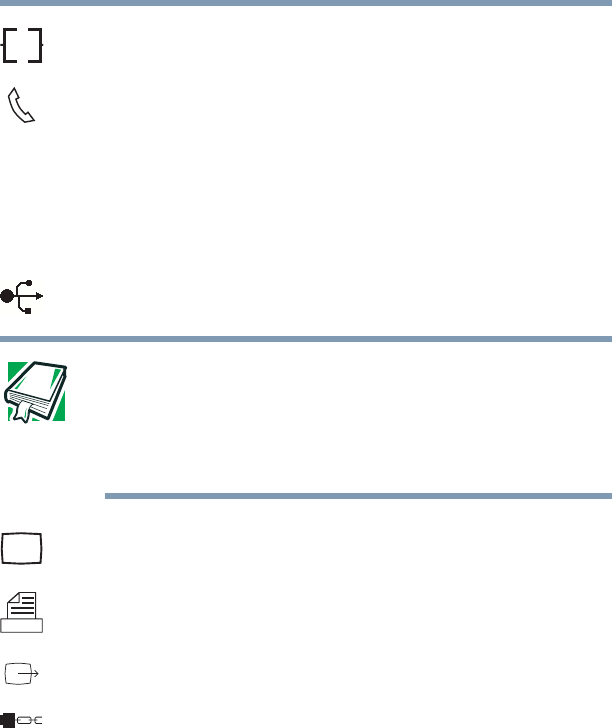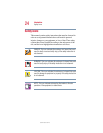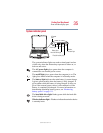
29
Finding Your Way Around
Back
5.375 x 8.375 ver 2.1.2
The LAN port enables you to connect the computer to a local
area network using a 10/100 Ethernet link.
The modem port enables you use a RJ11 telephone cable to
connect the modem directly to a standard telephone line. For
more information, see “Connecting the modem” on page 95.
i.LINK
®
port—The i.LINK
®
port on the back of the computer
provides very fast data transfer rates of up to 400 megabits per
second (Mbps). You can connect up to 63 external devices to this
port.
The USB (Universal Serial Bus) ports enables you to
connect USB peripherals to your computer.
DEFINITION: USB is a peripheral expansion standard that
supports a data-transfer rate of up to 12 Mbps for peripherals such
as keyboards, pointing devices, and monitors. USB peripherals
have a single standard for cabling and connectors. The USB
standard allows hot swapping of peripherals.
The RGB (monitor) port enables you to connect an external
monitor.
The parallel port enables you to connect a parallel printer or
other parallel device, including ECP-compatible devices.
S-video enables you to play DVD audio and video on a
projector or TV that accepts audio/video inputs.
The security lock slot enables you to attach an optional Port
Noteworthy
®
computer lock cable to your computer to secure
it to a large, heavy object such as your desk.
Ether


















